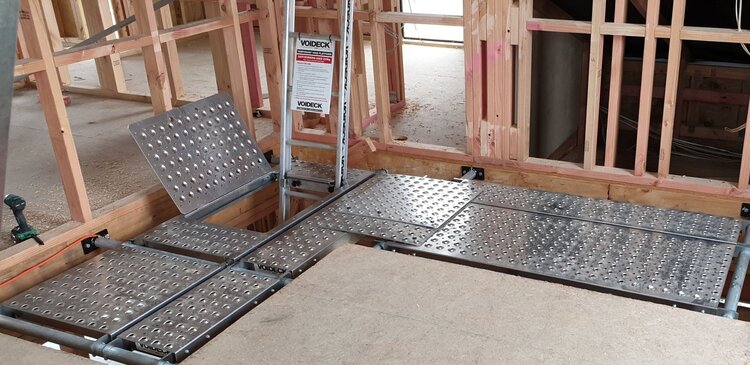A safe construction site is not just a happy coincidence; it’s the result of a constant commitment to prioritizing the wellbeing of every worker.
Accidents on construction sites can have devastating consequences, causing injuries, delays, and even fatalities, but these tragedies are preventable.
By implementing a comprehensive safety program and fostering a culture of safety awareness, construction companies can create a work environment where everyone goes home safe and healthy at the end of the day.
Building a Culture of Safety on the Construction Site
1. Make Safety a Top Priority
Safety shouldn’t be an afterthought on a construction site. Leadership needs to set the tone by demonstrating a clear commitment to safety over deadlines or production quotas.
This means allocating resources for safety training/equipment and holding everyone accountable for following safety protocols.
2. Develop a Comprehensive Safety Plan
A strong safety plan is the roadmap to a safe work environment.
This plan should outline risk assessments for different tasks, establish clear communication protocols for reporting hazards, and detail emergency procedures in case of accidents.
3. Regular Safety Training
Safety knowledge is power. Workers at all levels, from experienced tradespeople to new hires, should receive ongoing safety training tailored to their specific roles.
Training can cover topics like hazard identification, safe work practices for different tasks, and the proper use of Personal Protective Equipment (PPE).
Regular safety training sessions will help all workers develop good habits that will keep them safer when on the worksite.
Implementing Worksite Safety Measures
4. Proper Use and Maintenance of Equipment
The right tools for the job are essential, and keeping them in top condition is just as important.
Ensuring equipment is inspected regularly and maintained according to manufacturer guidelines is vitally important to ensuring safe and effective work.
Workers should also be trained on the proper use and operation of each piece of equipment.
5. Hazard Identification and Control
Proactive hazard identification is key to preventing accidents.
Regular site inspections should be conducted to identify potential hazards like tripping hazards, unstable structures, or electrical dangers.
Once identified, these hazards need to be addressed through implementing safeguards and safety equipment to minimize the risk of an injury.
This might involve implementing temporary fall protection systems for construction sites such as guardrails, void protection, scaffolding, harnesses and safety nets, or proper shoring for trenches to prevent cave-ins.
6. Maintaining a Tidy Workspace
A cluttered construction site is a recipe for disaster.
Keeping the work area clean and organized minimizes tripping hazards caused by loose materials or misplaced tools. Designated waste disposal areas should be established to prevent debris buildup.
7. Clear Signage and Communication
Clear communication is vital for safety.
Construction sites should have well-placed signage that warns of potential hazards, designates walkways and restricted areas, and clearly marks emergency exits.
Regular safety meetings also play a crucial role in keeping everyone informed about potential risks and safe work procedures.
Promoting Construction Safety Awareness
8. Open Communication and Reporting
A safe work environment encourages open communication about safety concerns.
Workers should feel empowered to report any unsafe practices, hazards, or near misses without fear of reprisal. This can be facilitated by establishing designated safety officers or anonymous reporting systems.
9. Positive Reinforcement of Safe Behavior
Safety shouldn’t be the only focus; it’s important to recognize and reward workers who consistently demonstrate safe work practices.
This positive reinforcement can take various forms, from verbal recognition to incentive programs, to encourage workers to prioritize safety.
10. Continuous Improvement
Safety is an ongoing process, not a one-time achievement. Regularly evaluate safety procedures, analyze incident reports, and adapt them based on new risks or lessons learned from past incidents.
This commitment to continuous improvement ensures that safety remains a top priority throughout the project’s lifecycle.
Make Building Site Safety A Priority
Creating a safe construction site environment requires a multi-pronged approach.
By prioritizing safety from the top down, implementing effective safety measures, and fostering a culture of awareness, construction companies can dramatically reduce the risk of accidents and create a safer work environment where everyone thrives.
Safety is not just good practice; it’s the foundation for a successful and productive construction project.






